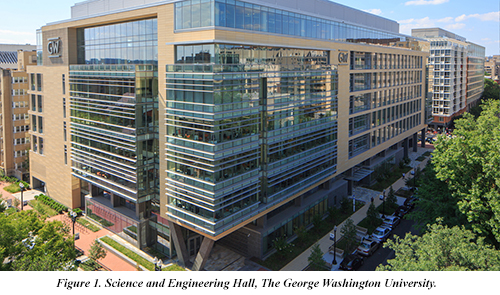
Greetings from the nation’s capital. As we approach the holiday season, and the close of an unprecedented year, we are pleased to present the latest developments at CDAC. These highlights emphasize the breadth of activities taking place in the Center.
Our CDAC-supported students have been doing remarkable research. Carnegie predoctoral student Eugene Vinitsky carried out crystallographic and spectroscopic studies on BaReH9 up to 80 GPa to gain further insight into the high pressure behavior of this unique material. Gopi Samudrala and Samuel Moore from the CDAC group at UAB have made a recent advance toward the goal of increasing achievable static pressures beyond the development of “two-stage” diamond anvils.
The Caltech group including current CDAC student Fred Yang and former CDAC students Lisa Mauger, Matt Lucas, and Jorge Muñoz, has shown that the alloy FeTi undergoes an unusual change in phonon dynamics associated with changes in its electronic properties at high temperatures. In collaboration with LLNL, University at Buffalo graduate student Andrew Shamp has carried out density functional theory-molecular dynamics simulations on B4C to help interpret laser shock experiments on the material.
The Northwestern group, including research associate Xiaobing Liu, has reported the fabrication of C2-BN nanocomposite. Also at Northwestern, postdoctoral associate James Walsh and graduate student Samantha Clarke in the group of Danna Freedman, along with co-workers at HPCAT, have succeeded in synthesizing the intermetallic FeBi2, the first compound to contain an Fe-Bi bond in the solid state.
In a collaborative study, CDAC Scientist Zhenxian Liu performed key synchrotron IR measurements to characterize a new polymeric material synthesized at high pressure from acetonitrile, (CH3CN). Meanwhile, a group that included CDAC scientists from Carnegie, the University of Hawai'i at Manoa, and the George Washington University revealed the crystal structure of a new type of ice that resembles the mineral quartz and is stuffed with over five weight percent of molecular hydrogen.
Theoretical work led by CDAC scientist Ivan Naumov reveals that dense hydrogen could be a topological insulator and semimetal leading to possible surface superconductivity. In further theoretical work led by Carnegie postdoctoral associate Hanyu Liu, new structures were predicted at 100-300 GPa using first-principles calculations.
Other highlights include Andrew Shamp earning an NNSA Fellowship, Max Murialdo accepting a postdoctoral position at LLNL, and Todd Zapata receiving his Ph.D. from Texas A&M. We have also followed up with several CDAC alumni, including Katie Brown at LANL and a trio of our former Summer Scholars at Chicago, to find out what they are doing now. Hannah Shelton and Przemek Dera from Hawai’i were both interviewed on ThinkTech Hawaii's livestream web show "Research in Manoa." Finally, CDAC continues to support discovery science dynamic compression experiments at NIF. This was facilitated by my sabbatical at LLNL during 2016.
In closing, despite the uncertainty that surrounds the coming year, our program remains strong. We are pleased to announce that CDAC is again accepting proposals for graduate student support for this final year of the current SSAP award. Also, the DOE/NNSA has begun accepting applications for their 2017 Graduate Fellowship program. The annual meeting for the SSAP will take place April 12-13 in Naperville, IL and will include a tour of a familiar sight – the Advanced Photon Source at Argonne National Laboratory. We look forward to seeing you there as well as earlier in the new year.
Sincerely,

